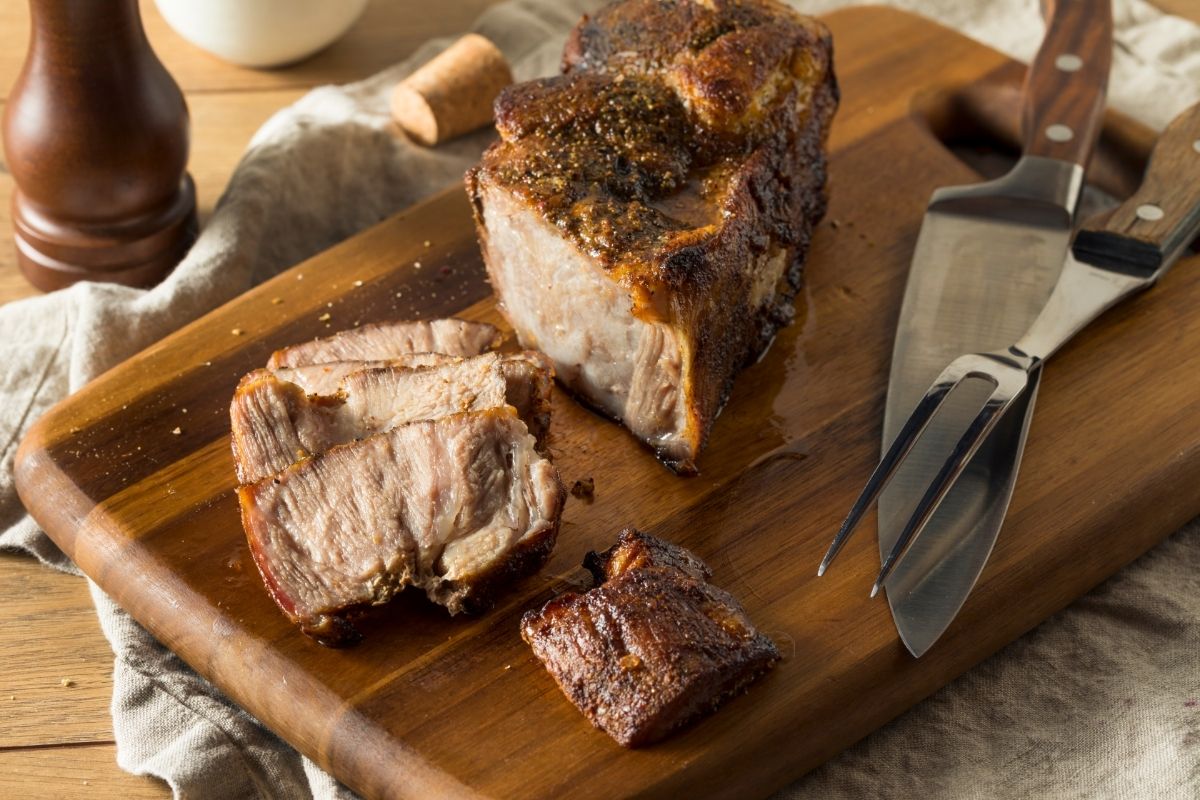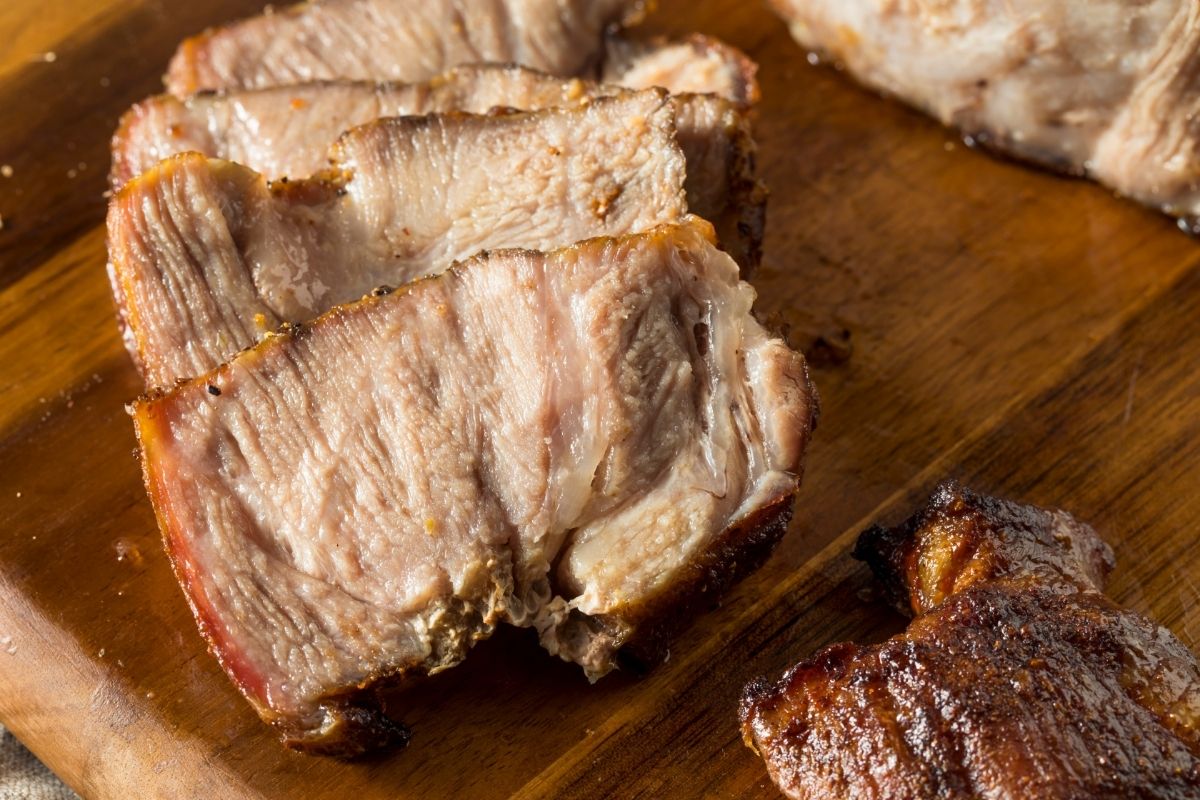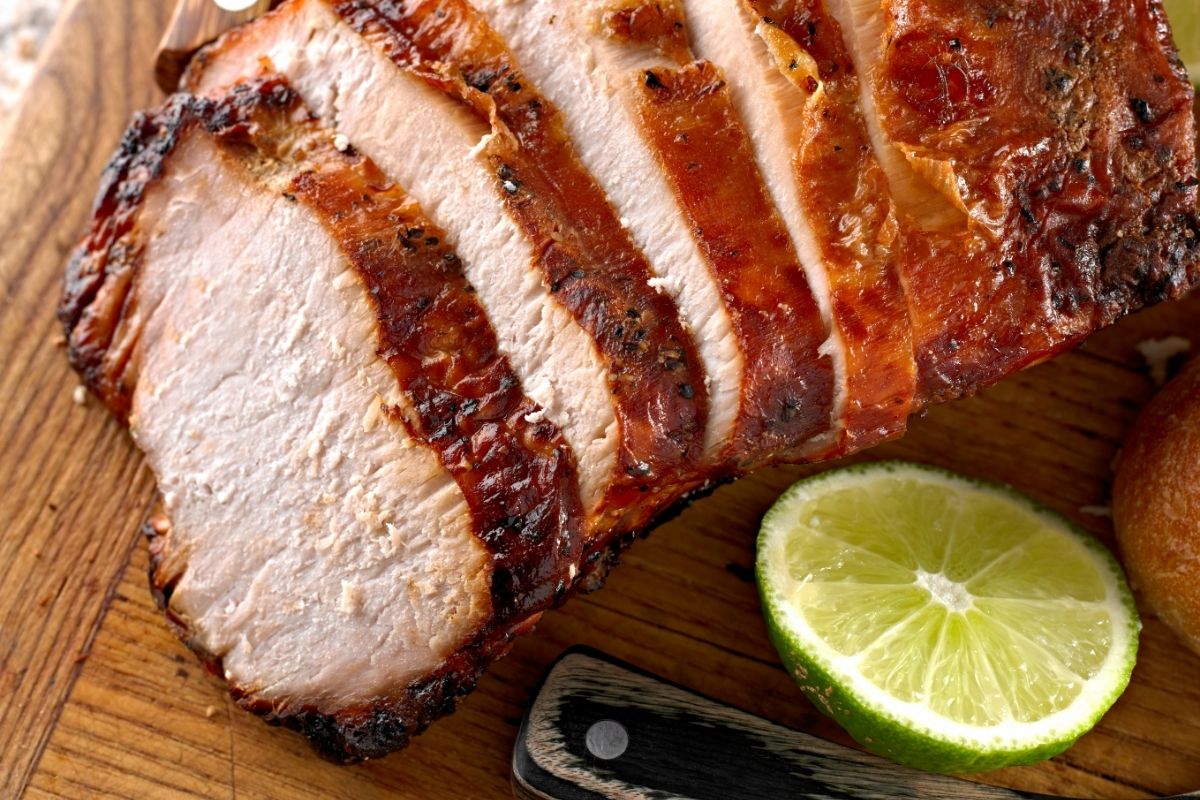If you’re a pork butt lover, then pork but stall can be a serious issue. You might be wondering what this is, or you might have fallen victim to this yourself,

and aren’t sure how you can prevent it from happening again. Whatever your reason might be, we are here to help!
We know how frustrating it can be when your meat doesn’t cook as you want. Suddenly, your dinner is on the brink of being ruined, and your hungry guests or family start to plan a revolt against you.
Your reputation as a good cook starts to falter, all down to one meat cut not cooking as you want.
Well, no more! Today we are here with the answers you need. Keep reading to find out what a pork butt stall is and how to get around it.
What’s Pork Butt?
A pork butt is a large cut of meat from the backside (or loin) of a hog, usually weighing between 4-8 pounds.
The name “butt” comes from the fact that it was originally butchered by cutting off the rear end of the pig. In some parts of the country, the term “pig butt” or “hog butt” is used instead.
A pork butt can be cooked in many ways, including grilling, roasting, barbecuing, smoking, stewing, and braising.
The most common way to cook a pork butt is to slow roast it for several hours at low temperatures until tender and falling apart. This method produces a very flavorful result.
Another popular cooking method is to smoke it over hickory wood chips.
What’s Pork Butt Stall?
The pork butt, also called pork shoulder, is a cut of meat from the pig that has been split down the middle, usually with the bone removed.
Pork butt meat contains a large amount of fat which is released during the long cooking time of the pork.
When you are cooking pork butt, you should regularly check its internal temperature. It should slowly increase up to a certain point. This is usually between 150 and 170 degrees Fahrenheit.
After this point, the internal temperature of the pork butt will stop rising and stay steady for several hours.
Barbecue enthusiasts and meat lovers call this point a “stall”. This steady temperature can last for up to 7 hours, depending on the size of your pork butt.
This can be a big issue when you are entertaining guests who are waiting for their food.
Ideally, a fully cooked pork butt should have a temperature of around 200 degrees Fahrenheit.
This isn’t all too far away from the 170 degrees during the stall, so what do experienced pitmasters do to help their pork butt along?
What Causes Pork Butt Stall?
Before we find out what to do about the pork butt stall, it’s worth taking a long look at what causes it. There are many rumors around why pork butt stall happen.
One of the main assumptions was initially that it’s due to the combination of collagen and moisture which forms gelatin.
Although this does happen at 160 degrees Fahrenheit, it’s likely not the real cause of pork butt.
Other BBQ lovers thought that pork butt stall occurs because the fat in the meat renders with the increasing heat.
However, this isn’t true as the fat renders at much lower temperatures as well.
Scientists had a look at what causes pork butt stall, and they call it “evaporative cooling”.
This simply means that the meat sweats during the cooking process. This moisture cools the meat down, so all the while the moisture sits on the outside of the meat, its inside temperature won’t rise.
When all the moisture evaporates, then you will notice the inside temperature of your pork butt rise again.
As pork butt consists of around 65% water, this evaporation can take a fairly long time to occur. This is the reason why the pork shoulder stall takes such a long time.
Factors That Influence Pork Butt Stall

Several factors impact the time it takes for all the moisture in the meat to evaporate.
Size
First off, the larger the pork butt, the longer it will take to reach and get out of the stall.
For example, a 3-pound pork butt will take roughly 4 hours to reach a stall, whereas a 5-pound one will take 6 hours.
Temperature
The higher the temperature, the faster the evaporation will occur.
Cooking Time
Another factor that influences how fast your pork butt reaches a stall is the amount of time you spend cooking it.
Shape Of The Meat
The shape and cut of the meat also impact how quickly you reach the pork shoulder stall, and how long it takes for the water to evaporate.
Texture
The texture is an important factor in the stall because a thick texture can mean the meat holds a lot more water which takes a long time to draw out of the pores.
Meat Rub
The ingredients of the meat rub you are using can also influence how quickly the moisture on your pork shoulder will evaporate.
The Inside Of Your Grill
When there is moisture inside your grill before you started, then it’s going to take longer for this moisture to evaporate.
It’s best to check for moisture inside your grill before you start cooking.
How To Prepare For The Pork Butt Stall
When you haven’t heard of pork butt stalls before, it’s easy to panic and try to put up the heat on your grill.
Some people even quickly bring the meat inside and place it in the oven. This won’t change anything about the temperature.
On the contrary, the cooking interruption is likely to cool the meat down.
None of this is necessary, as the pork shoulder meat will cook after a few hours again.
If you want to speed up the stall, and make sure your meat is perfectly cooked, here are our top tips.
Buy A Good Meat Thermometer
A well-functioning meat thermometer is an essential piece of equipment for every barbecue lover. You need to regularly measure the temperature of the meat to find out when the meat stalls.
Try The Texas Crutch
Many pitmasters don’t like the Texas crutch because they believe it impacts the taste of the meat. However, the Texas Crutch is a quick way to help the stall along.
This involves wrapping your meat in aluminum foil, adding some water on the top, and placing it back into your grill.
The liquid inside the aluminum foil will turn to steam and as it’s wrapped in foil, it can’t go anywhere. This helps the temperature of the meat to rise.
You shouldn’t start your meat off with the Texas crutch. The best moment to apply the foil is when the internal temperature of the pork butt gets to around 170 degrees Fahrenheit.
This may be a couple of hours into the cooking process.

Invest In A Pellet Smoker
Pellet smokers are the latest smoker trend, and there is a good reason. They come with an inside fan that works similar to a convection oven.
This means that the heat is distributed evenly and it will speed up the moisture evaporation of your pork butt meat.
Although electric grills are an equally good investment, the taste in an electric smoker will be very different from that of a pellet grill.
Cut Smaller Pieces
Of course, this isn’t an option for everyone. A large cut of pork shoulder is a true delight but if you are set on avoiding the stall, then it’s best to cut your pork butt into smaller chunks.
This means the liquid inside the meat can evaporate quicker and your meat is cooked much faster without stall.
Cook At A High Temperature
When you increase the temperature and cook your pork shoulder at around 300 degrees Fahrenheit, you can shorten the stall significantly.
Sometimes you might find that for smaller pieces that cook at a higher temperature, the pork stall doesn’t even happen.
Avoid Adding Any Liquids
Seasoning and any liquids added on top of the meat during cooking can slow down the cooking process a lot.
Seasoning is one of the biggest contributors to moisturizing your meat. It’s usually kept at a much cooler temperature than your grill, so this adds to bringing the temperature of your meat down.
Wait
This is probably one of the most obvious methods for beating the pork butt stall. However, you will need to count in the extra cooking time for your barbecue.
Cooking pork butt takes a lot of patience, and although six to seven hours waiting for the meat to cook can seem like a long time, we found it’s well worth it!
Are There Any Other Meats That Stall?
No, pork butt isn’t the only meat that can stall. You will find that other large cuts of meat also stall. This includes beef briskets.
The stall is impacted by the weight of the meat, so any thick and large cuts will take a long time to cook.
Conclusion
Pork butt requires a lot of patience when it comes to cooking. With its great texture and large size, it’s the perfect party food.
As pork butt stall can happen on larger cuts of meat, it’s best to account for plenty of cooking time.
Frequently Asked Questions
How Long Do You Leave A Stall On A Pork Shoulder?
As a rule of thumb, pork shoulder stalls can last for around 6 hours. Sometimes the stall lasts only 2 or 4 hours.
This depends on the size of the meat, its texture, and the meat rub you put on.
Should I Wrap My Pork Butt?
You can wrap your pork butt in aluminum foil to speed up the pork butt stall. This will trap the heat and moisture inside so that the meat cooks faster.
How Long Should Pork Butt Sit?
You should allow the pork butt to sit for at least 30 minutes if you want to use the meat for pulled pork.
You can let the meat sit for a maximum of 2 hours, so it doesn’t dry out and becomes leathery.
However, it’s best not to wait too long as the meat will get cold quickly.
- The 9 Best BBQ Grills for Smoking Brisket - December 29, 2022
- 6 Mouth Watering Grilled Shrimp Recipes - September 16, 2022
- 6 Delicious Grilled Desserts - September 16, 2022

